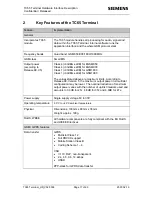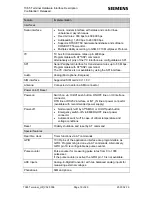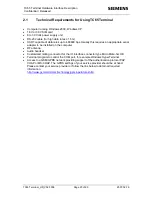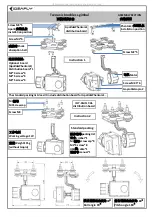
TC65 Terminal Hardware Interface Description
Confidential / Released
s
TC65 Terminal_HD_V02.000b
Page 31 of 65
2007-02-19
3.7.1
Supported Audio Modes
The audio interface can be configured by AT commands. Refer to [1] for details.
The electrical characteristics of the voiceband part vary with the audio mode. Specifications
are listed in Table 11. To suit several types of audio equipment, three audio modes given by
default can be selected by the AT command AT^SNFS.
Regarding audio performance, compliance with the TS 51010-1 specification and GCF
recommendations has been certified for the parameters provided by audio mode 1 and audio
interface 1. The settings are optimized for the reference handset (type Votronic) connected
to the TC65 Terminal (see chapters 6.1 and 7). To ensure that the reference parameters are
always within the limits demanded by the standards they cannot be changed by AT
command. Furthermore, the reference parameters are set as factory default.
In audio mode 4 and 5, the gain in the microphone, earpiece and the sidetone path can be
adjusted from the cellular device application by using further AT commands.
Please note that the 2
nd
audio interface of the TC65 module is not connected in the TC65
Terminal. Audio modes 2, 3 and 6 can be selected by setting AT^SAIC=2,1,1, for further
details refer to [1].
Table 11: Audio modes
Mode No
AT^SNFS=
1 (Default settings,
not adjustable)
4
5
Name
Default Handset
User Handset
Plain Codec 1
Purpose Recommended
handset
User provided
handset
Direct access to
speech coder
Gains programmable via AT
command
NO YES YES
Sidetone YES
YES
YES
Volume control
NO
YES
YES
Echo control (send)
Cancellation and
suppression
Cancellation and
suppression
NO
Noise suppression
YES
YES
NO
MIC input signal for 0dBm0
@ 1024 Hz
(at default gain settings)
12.5 mV
12.5 mV
400 mV
Earpiece output signal in mV eff.
@ 0dBm0, 1024 Hz, no load (at
default gain settings);
@ 3.14 dBm0
475 mV
475 mV (default @
max volume)
1.5 V
6.0 Vpp
Sidetone gain (at default settings) 24.9 dB
24.9 dB
-
∞
dB
















































